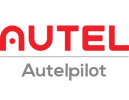Low Altitude Authorization and Notification Capability (LAANC) is an important development in the integration of drones into the national airspace. It enables drone pilots to quickly obtain authorization to fly in controlled airspace, thereby improving safety and operational efficiency.
With the rapid development of drone technology, drones are becoming more and more widely used in commercial and recreational fields. People are becoming more and more accepting of recreational drones. However, the booming drone industry in the United States has caused a shock to airspace regulations.
LAANC authorization is designed to allow drone pilots to fly legally in controlled airspace, ensuring air safety and regulatory compliance. This article will introduce the importance of LAANC, operating procedures, application processes, and basic guidelines for drone pilots.
What is LAANC? Why is it so important?
LAANC is a collaboration between the Federal Aviation Administration (FAA) and private industry. It is a digital authorization system designed to provide near real-time processing of airspace authorizations below approved altitudes (400 feet high) in controlled airspace.
Importance of LAANC:
1. Unlocking controlled areas: Drones have a greater range of flight for some controlled areas and controlled conditions, such as near airports and flying above 400 feet.
2. Enhanced safety: LAANC ensures that drone flights are coordinated with manned aviation operations, minimizing the risk of mid-air collisions.
3. Operational efficiency: It reduces the time required to obtain airspace authorization from weeks to seconds, making drone operations more spontaneous and flexible.
4. Regulatory compliance: LAANC promotes compliance with FAA regulations, helping drone pilots fly legally and avoid fines.
How does LAANC authorization work?
LAANC automates the application and approval process for airspace authorization, making airspace authorization faster and simpler. Here is a step-by-step description of its operation:
1. Data exchange: The FAA provides airspace data to LAANC service providers.
2. Submission: Drone pilots submit flight plans through LAANC-enabled applications.
3. Verification: The system verifies the flight plan based on airspace data and FAA regulations.
4. Approval: If the plan meets the approved parameters, authorization is granted almost immediately.
Among these data exchange requests are UAS facility maps, special-use airspace data, airport and airspace category details, as well as temporary flight restrictions (TFRs) and notices of airspace missions (NOTAMs). Getting LAANC authorization approval is almost instant.
It is important to note that LAANC only handles airspace authorizations. Pilots are still responsible for checking NOTAMs, assessing weather conditions, and complying with all other airspace restrictions and considerations.
How do I apply for LAANC authorization?
The LAANC process for applying for airspace authorization is fairly streamlined and easy to use, and every drone pilot can quickly understand and apply.
LAANC's onboarding process for new applicants is a five-step process:
- Application time: Applicants familiarize themselves with the main documents and submit a comprehensive application package.
- FAA submission review: The FAA evaluates the application and may request additional information, such as location, altitude, and time.
- Technical interview: Successful applicants must participate in a mandatory technical interview.
- Formal testing: Selected applicants will undergo integration testing with the LAANC automation platform.
- LAANC Go Live: Approved USSs receive production LAANC credentials and connect to the LAANC system.
This comprehensive process ensures that all approved LAANC USSs meet the standards and requirements necessary to operate safely and effectively within the LAANC framework.
Essential Guidelines for Drone Pilots
To effectively use LAANC and ensure safe operations, drone pilots should adhere to the following guidelines:
1. Understand Controlled Airspace: Be familiar with the different types of controlled airspace and their specific restrictions.
2. Pre-flight planning: Always plan your flight in advance, taking into account weather conditions, nearby manned aircraft, and potential obstacles.
3. Use Authorized Applications: Utilize LAANC-enabled applications to submit and manage flight plans. Make sure your application is up to date and functioning properly.
4. Maintain Line of Sight: Always keep your drone within visual line of sight (VLOS) to ensure safe operations.
5. Monitor Airspace Changes: Stay informed of changes in airspace regulations or Temporary Flight Restrictions (TFRs) that may affect your operations.
6. Comply with local laws: In addition to FAA regulations, be aware of local laws and ordinances that may affect drone use in a particular area.
LAANC authorization unlocks more places for drone pilots to fly and even creates better drone business opportunities, including drone aerial photography, drone inspections, and other drone applications.
How and when do drone pilots use LAANC?
When drone pilots intend to fly drones below 400 feet in controlled airspace near airports, they must obtain airspace authorization from the Federal Aviation Administration in advance, otherwise they may face consequences such as drone confiscation and fines.
Those flying under Part 107 of the Small UAS Rules or recreational pilots can use LAANC through FAA-approved LAANC UAS service providers.
There are two main methods involved in the use of LAANC:
Requesting near-real-time authorization for flights below 400 feet in controlled airspace near airports is open to both Part 107 pilots and recreational pilots.
Submitting a "Request for Further Coordination" to fly above the altitude limit set by the UAS Facility Map (but still within 400 feet) is only available to Part 107 pilots, who can apply within 90 days before the flight.
Part 107 pilots must register their drones and have a remote pilot certificate.
Recreational pilots must register their drones and complete the Recreational Unmanned Aircraft System Safety Test (TRUST) before their first flight.
For operations conducted in controlled airspace, both a waiver and an airspace authorization are required, and applications for both must be submitted through the FAA's DroneZone.
Conclusion
The introduction of the LAANC system has significantly improved the safety and efficiency of drone flights, creating a good environment for the development of the drone industry. Drone pilots can focus more on their missions and reduce administrative tasks. As technology and regulatory frameworks continue to evolve, the LAANC system will continue to play an important role in driving the drone industry forward.
Frequently Asked Questions
1. How long does it take for LAANC to approve?
LAANC generally provides near real-time approval of airspace authorizations. In most cases, the LAANC approval process is usually completed within a few minutes.
2. Who can use LAANC?
LAANC is available to both Part 107 certified pilots and recreational pilots.
3. How do I get a LAANC clearance?
In order to get a LAANC clearance, pilots need to submit an airspace authorization request through a LAANC provider, using a mobile app or desktop app provided by an FAA-approved UAS Service Provider (USS).
Related More:
400-Foot Height Limit: What Drone Pilots Must Know
Autel Robotics UAV Drone Certification Updating For EU Regulations
Drone Remote ID - What Does It Mean For The Autel EVO Drone?







